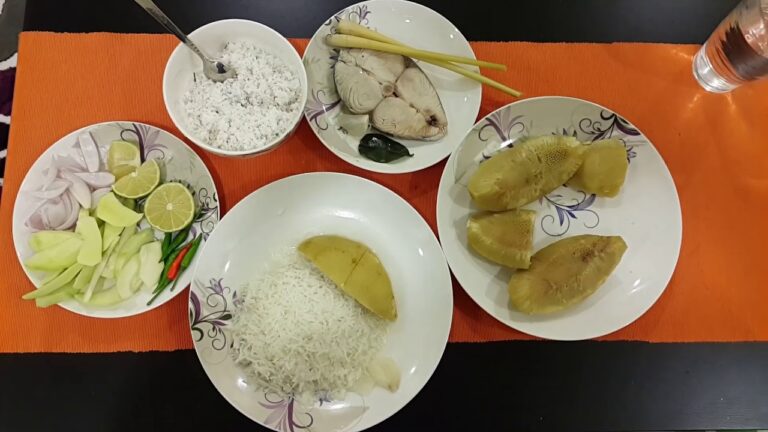Introduction: Exploring Maldivian Cuisine
Maldives, a country of more than 1000 islands, located in the Indian Ocean, has a unique cuisine that is influenced by its geography and history. The Maldivian cuisine is primarily based on fish and coconut, which are abundant in the country. The dishes are known for their spiciness, and the spice mixtures used in Maldivian cooking are often unique to the country. However, the question that arises is whether there are any influences from neighboring South Asian or Southeast Asian cuisines in Maldivian dishes.
The Geographical Context: South Asian and Southeast Asian Neighbors
Maldives is located in close proximity to South Asian and Southeast Asian countries, including India, Sri Lanka, Thailand, and Indonesia. The proximity of these countries has resulted in some influence on Maldivian cuisine. For instance, the use of spices, particularly chili, in Maldivian cuisine is similar to that of Indian and Sri Lankan cooking. Additionally, the use of coconut in Maldivian dishes is reminiscent of Indonesian and Thai cuisines.
The Maldivian Spice Cabinet: Similarities and Differences
As mentioned earlier, the use of spices is an essential component of Maldivian cuisine. The Maldivian spice cabinet consists of a mixture of spices unique to the country, including cumin, coriander, cardamom, and turmeric. However, there are some similarities between Maldivian and South Asian cooking in terms of spices. For instance, the use of chili and black pepper in Maldivian cuisine is similar to that of Indian and Sri Lankan cooking. At the same time, the use of curry leaves and cinnamon is also evident in some Maldivian dishes, which are common in Sri Lankan cuisine.
Maldivian Seafood: Influenced by Southeast Asian Cuisines?
Seafood is a significant component of Maldivian cuisine, and the country’s proximity to Southeast Asian countries has resulted in some influence on its seafood dishes. For instance, the use of lemongrass in Maldivian fish curries is reminiscent of Thai cooking. Similarly, the use of tamarind in some Maldivian seafood dishes is similar to Indonesian cuisine. However, despite these influences, Maldivian seafood dishes remain unique in terms of their spice mixtures and cooking techniques.
Rice and Curry: South Asian or Maldivian?
Rice and curry are staple dishes in Maldivian cuisine, and these dishes have some similarities with South Asian cooking. For instance, the use of coconut milk in Maldivian curries is similar to that of Sri Lankan cooking. However, Maldivian curries are generally more spicier than their South Asian counterparts. Additionally, Maldivian curries often use a combination of spices unique to the country, which sets them apart from South Asian curries.
Sweet Treats: Cultural Blending in Maldivian Desserts
Maldivian desserts are a unique blend of Arab, South Asian, and Southeast Asian influences. For instance, the use of coconut in Maldivian desserts is similar to that of Southeast Asian cooking. Similarly, the use of dates in some Maldivian desserts is reminiscent of Arab cooking. However, despite these influences, Maldivian desserts have a unique flavor that is distinct from the cuisines of neighboring countries. For instance, the Maldivian sweet dish ‘Bambukeylu Hitin’ is made of rice flour, coconut, and jaggery, which is a unique combination of ingredients not found in other cuisines.
In conclusion, while Maldivian cuisine has some influences from neighboring South Asian and Southeast Asian cuisines, it remains a unique cuisine that is distinct from other cuisines in the region. The proximity of these countries has resulted in some similarities in terms of spices, seafood, and desserts, but Maldivian dishes remain unique in terms of their spice mixtures and cooking techniques.

